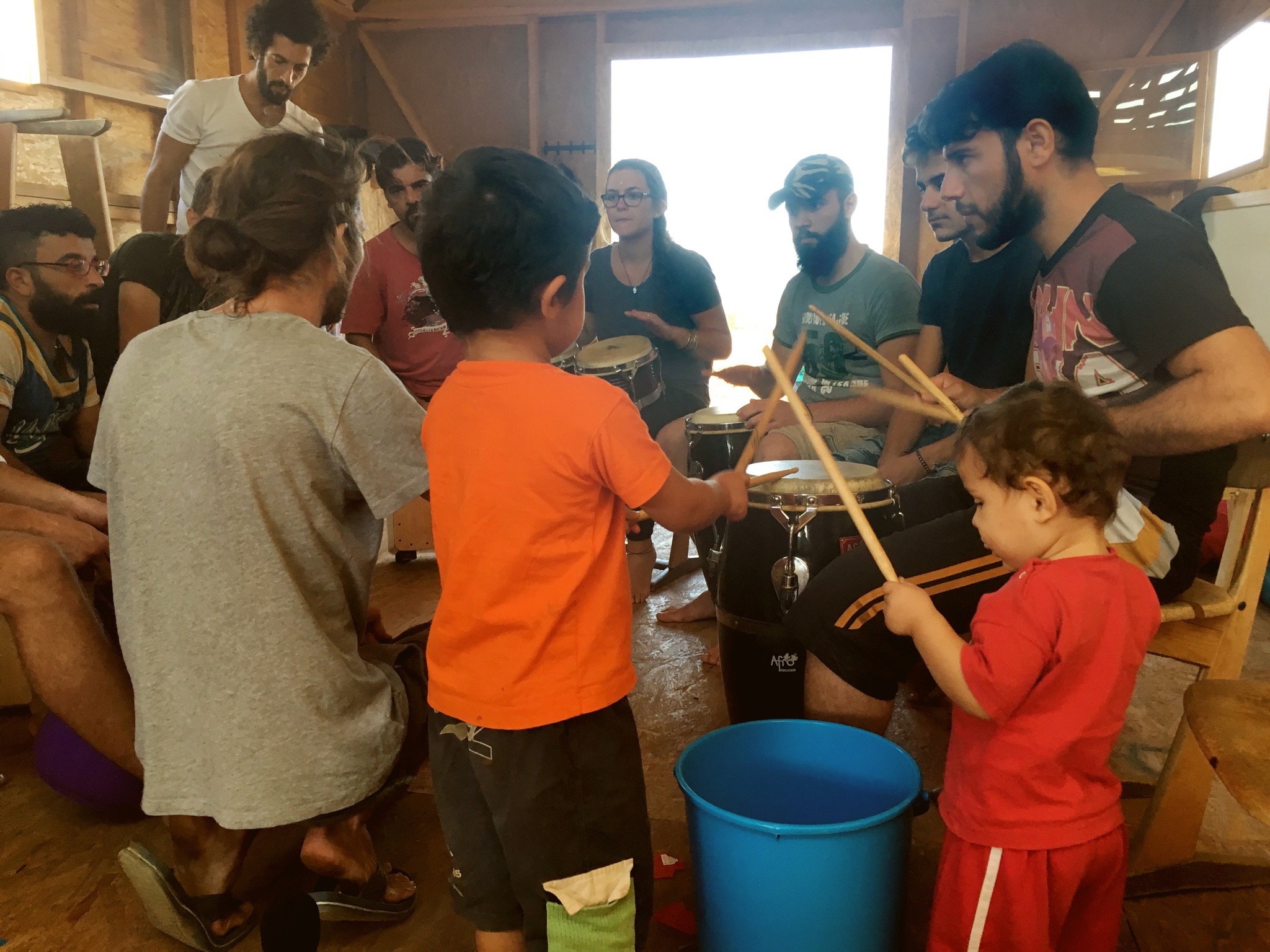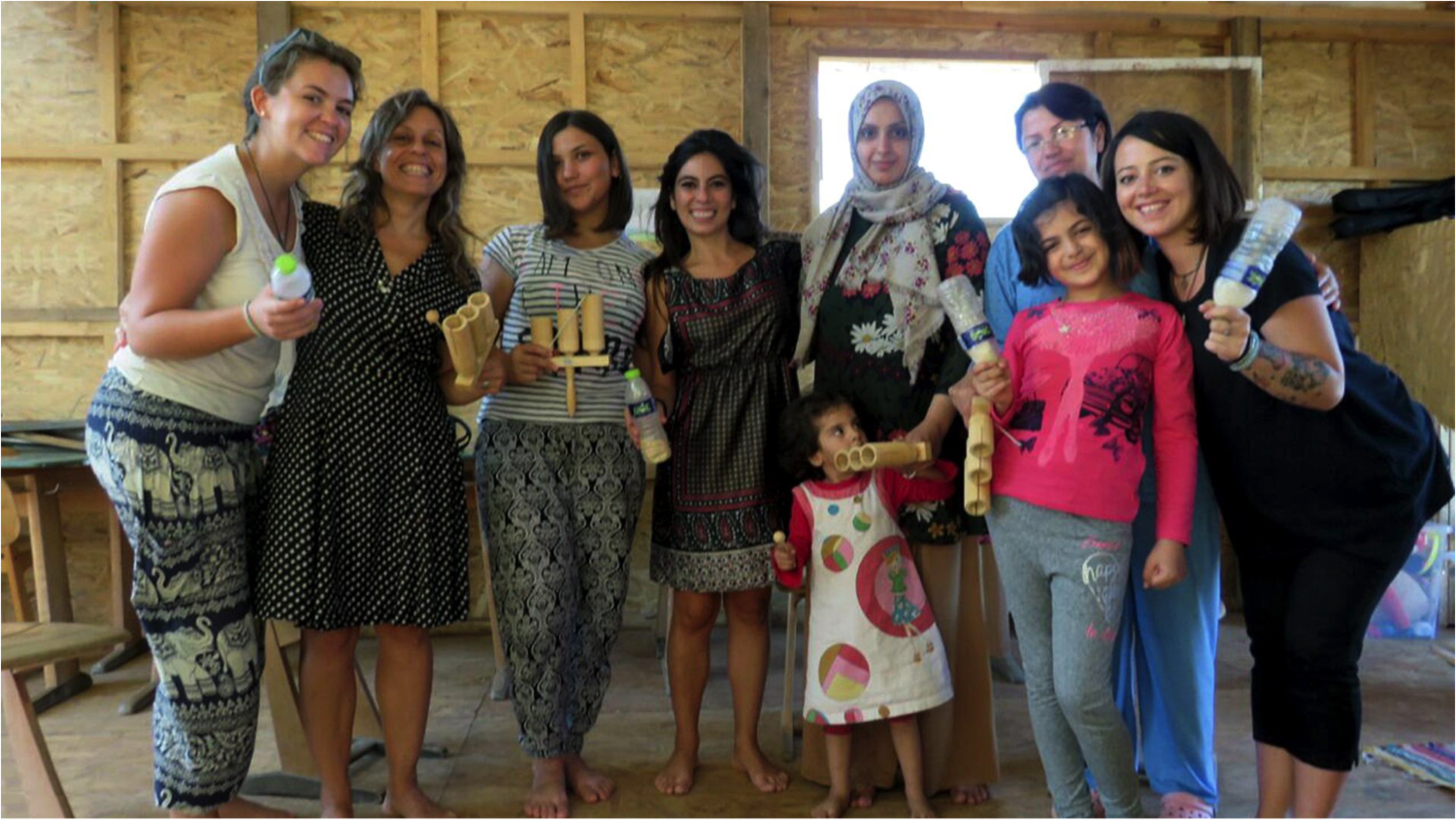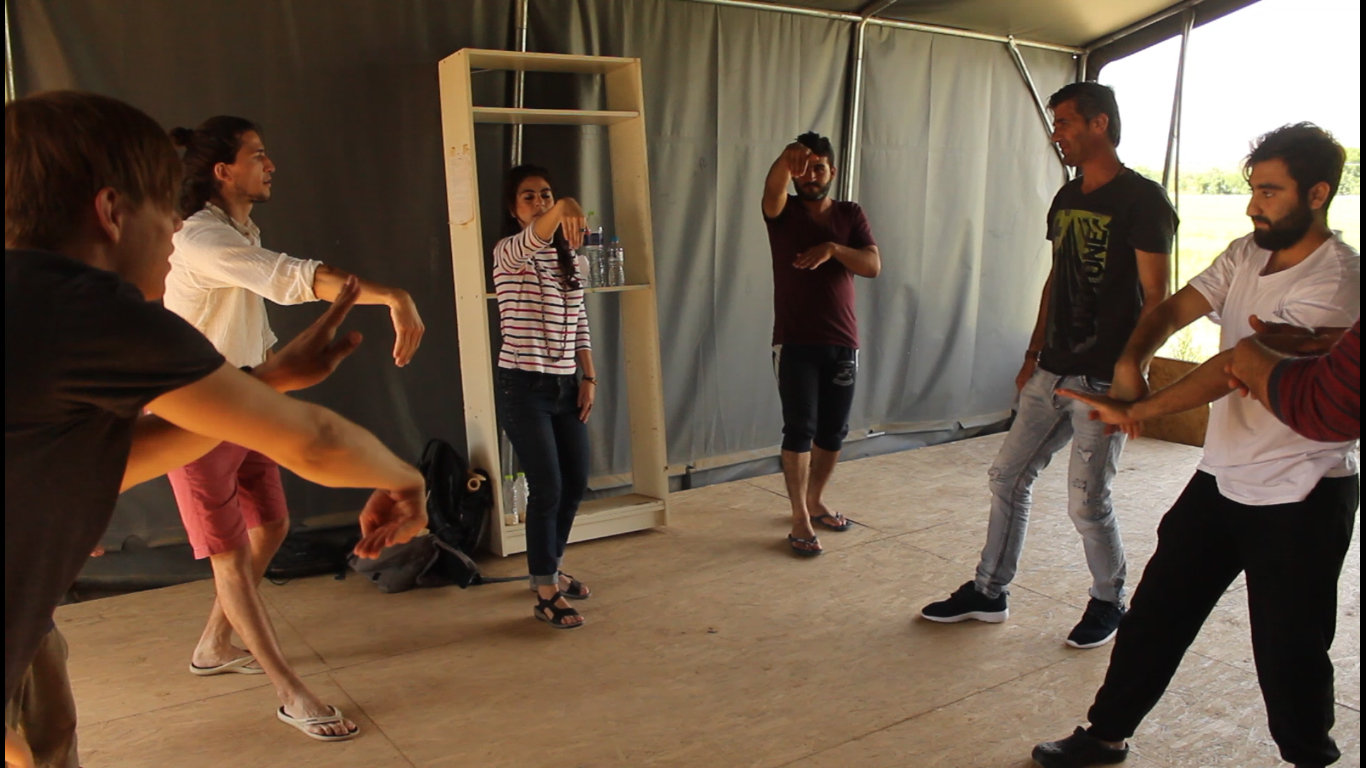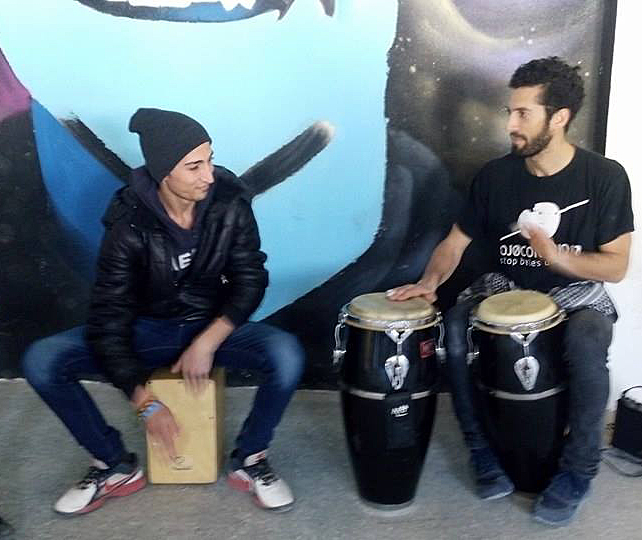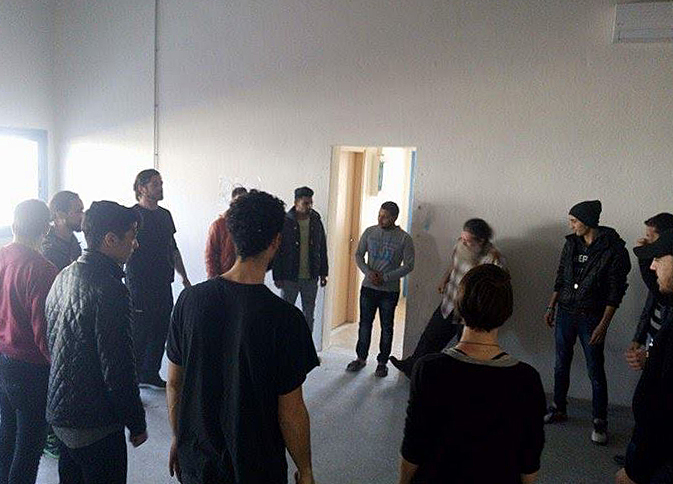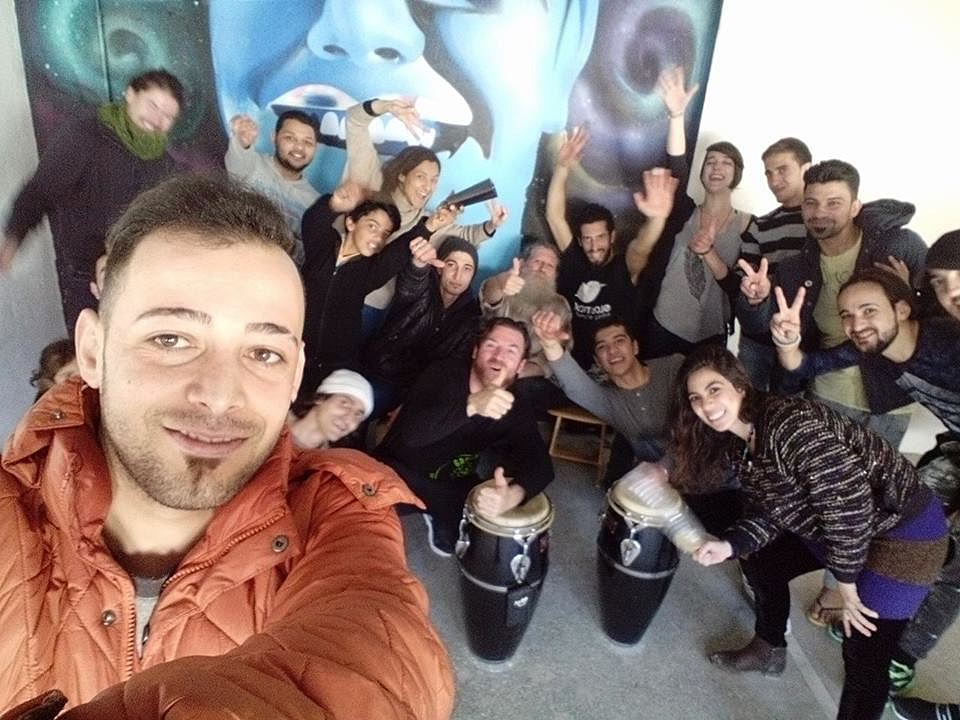Refugee Camps, Thessaloniki (GRC)
The project in Summary
Music-centered workshops with residents of two refugee camps near Thessaloniki, to help reduce the traumatic effects of the displacement experience. By creating opportunities for enjoyment, coordinated group exercises, and self-expression, the aims were to help participants regain their self-worth and a sense of purpose.
PEOPLE
Refugees and asylum seekers from Syria, Iraq, and Afghanistan. Separate workshops would be organized for women and girls, men and boys, families, and teenagers. The ages of the adults were 18 to 40 years old.
MUSic
Several of the exercises and games would be the same as those described on the page about the Alkyone and Oikopolis centers.
Activities for teenagers and adults would include more complex individual and group participation.
Body percussion starting with very simple movements and sounds such as claps and snaps, practiced at four different tempos until a clear pattern emerged from the group: Then the group would be divided, with each subgroup ensemble taking a turn to practice a different rhythmic pattern. Subsequently the two ensembles would be able to play their distinct rhythms together, unified while maintaining their diverse expressions.
Chain of sounds with everyone playing a percussion instrument. The facilitator would commence with a simple rhythm and the participants, always in a circle, would gradually join, one by one. After the last participant joined, the facilitator would stop playing, and continuing again arond the circle, gradually each participant would finish until everyone stopped. The exercise would be repeated with different rhythms.
With music in the background and the participants in pairs, a mirror game would ensue, in which each member of the pair would take turns making motions that had to be mirrored precisely by the other. Thus everyone experienced the opportunity to lead and the responsibility to follow. Music would begin softly and gradually intensify to encourage different motions.
A related percussion game would follow with agogos (bells) and shakers. With everyone else looking and listening, a participant would create a rhythm and melodic contour. Everyone would then repeat it, back and forth with the composer. Continuing around the circle, each participant had the opportunity to be the composer/leader, with all others following in unity.
The workshops would always conclude with a song to say goodbye.
change
Relaxation, pleasure, and laughter were in abundance. Some residents were meeting each other for the first time. Through creating music together, they engaged in artistically expressive and empathic communication. Mohamed, one of the residents, said, “Music doesn’t have any nationality. Everyone can understand it and feel it and put together all cultures in the world.”
